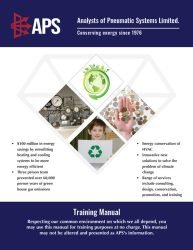The Energy Enigma That’s Got Scientists Scratching Their Heads
What happens when a simple invention challenges one of physics’ most famous equations? Spoiler alert: Einstein might need to make room at the table.
The Age-Old Question That Still Keeps Physicists Up at Night
Here’s something that might surprise you: despite centuries of scientific progress, physicists still can’t definitively tell you what energy actually is. Sure, we can measure it, calculate it, and harness it to power everything from your morning coffee maker to rocket ships. But its true essence? That remains one of science’s most elegant mysteries.
We’ve gotten pretty good at describing what energy does through its effects—kind of like describing a ghost by the doors it slams and the temperature drops it causes. For the most part, this approach has served us well. After all, Einstein’s famous E=MC² has been our go-to energy equation for over a century, treating energy and mass as two sides of the same cosmic coin.
But what happens when you stumble upon something that doesn’t play by those rules?
Enter the Diamond-Shaped Disruptor
Through extensive experimentation with a patented Diamond-Shaped Actuator (DSA)—think of it as a hydraulic system with some serious geometric personality—we’ve observed phenomena that have us questioning some fundamental assumptions about energy and work.
Here’s where things get interesting (and slightly mind-bending):
The “Less is More” Phenomenon
In controlled tests, this diamond-shaped device consistently demonstrates something that shouldn’t be possible according to classical physics: it produces more work output from less fluid input.
Picture this: you have two systems. The first uses a larger volume of pressurized fluid. The second (our DSA) uses a smaller volume. Logic dictates that bigger input should equal bigger output, right? Not so fast.
The DSA not only matches the work output of the larger system—it exceeds it. And when we optimize the area ratios, it can even do so at higher pressures. It’s like getting a bigger pizza from less dough, which would make any Italian grandmother question the laws of physics.
The Conservation Conundrum
This is where our story takes a turn that would make even seasoned physicists do a double-take. These observations suggest something that challenges one of physics’ most sacred principles: the conservation of energy.
In simple terms, we appear to be getting more energy out than we’re putting in (Work_out > Work_in). If you’re hearing alarm bells, you’re not alone—this flies in the face of everything we thought we knew about energy conservation.
Einstein’s Equation Under the Microscope
Now, if we stick to Einstein’s E=MC², where energy increases proportionally with mass (assuming the speed of light squared remains constant), then more mass should always equal more energy and more work potential.
But our diamond-shaped challenger is producing more work using less mass (less fluid volume). According to E=MC², this shouldn’t be possible. It’s like claiming you can run a marathon faster by eating fewer energy bars—the math just doesn’t add up.
So, What’s Really Going On Here?
Before you start planning your perpetual motion machine empire, let’s be clear: we’re not claiming to have broken the laws of physics (though they do seem a bit bent out of shape). What we are suggesting is that there might be more to the energy story than our current equations capture—at least in certain macroscopic applications.
Think of it this way: for centuries, Newton’s laws perfectly described motion until we zoomed out to cosmic scales and down to quantum realms, where Einstein’s relativity and quantum mechanics had to step in. Perhaps we’re witnessing a similar boundary condition where our traditional energy equations need some company.
The Invitation for Exploration
While we don’t pretend to have solved the mystery of what energy fundamentally is, we’ve certainly uncovered some intriguing clues about what it can do. This invention presents measurable, repeatable behaviours that invite further exploration and, frankly, some healthy head-scratching from the scientific community.
For those curious about the technical details, our Student Logic Course breaks down the basic science behind this challenging invention in the most accessible way possible. You can find it in pages 4, 5, and 6 of our course materials here.
The Bottom Line
Science progresses not just through confirming what we think we know, but by encountering phenomena that make us question our assumptions. Whether this diamond-shaped actuator represents a new chapter in our understanding of energy or simply reveals gaps in our current models remains to be seen.
What we do know is this: the universe still has plenty of surprises up its sleeve, and sometimes the most profound discoveries come from the most unexpected places—even from a geometric shape that decided to play by its own rules.
Have insights into how energy might be redefined in light of such behaviour? Or perhaps you can help resolve the apparent contradiction between these observations and classical energy laws? We’d love to hear from researchers, physicists, and curious minds who want to dive deeper into this energy enigma.

